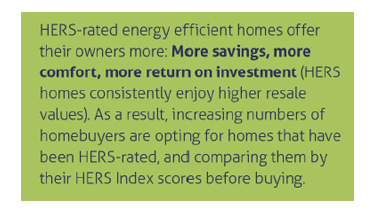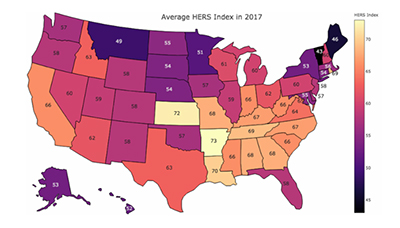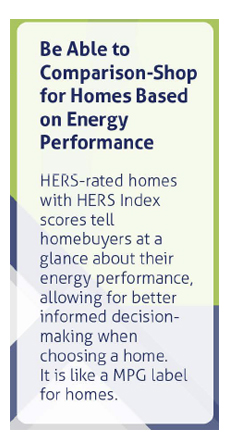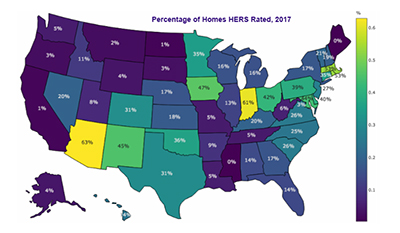Dave Roberts of the National Renewable Energy Research Laboratory (NREL) has been researching the market acceptance of the Home Energy Rating System (HERS) Index in the U.S. housing market. His research discovered that in 2017, 23% of all completed new homes in the U.S. were HERS rated. This a 1% increase from the percentage of homes that were HERS Rated in 2016.
NREL's research broke down the percentage of completed new homes in 2017 that were HERS rated by state.
The breakdown by state of the average HERS Index score of rated homes in 2017:
| RANK | STATE | HERS Score | RANK | STATE | HERS Score | |
| 1 | Vermont | 43 | 6 | Connecticut | 54 | |
| 2 | Maine | 46 | 7 | South Dakota | 54 | |
| 3 | Montana | 49 | 8 | Nebraska | 54 | |
| 4 | Minnesota | 51 | 9 | North Dakota | 55 | |
| 5 | New York | 53 | 10 | Maryland | 55 |

 HERS Homes Are Better
HERS Homes Are Better
Nebraska is low (17% rating) in the number of homes that are HERS rated. But at the same time, Nebraska has an average HERS Index Rating of 54, raking at eighth highest in U.S. for number of most energy efficient homes built. The Nebraska Energy Office has a HERS webpage with more information.
Homes in the U.S. with a high energy rating typically have a higher resale value. The homeowner benefits from years of low utility costs (sometimes net-zero costs) which more than covers the higher price of a HERS rated home, which makes HERS homes a better choice.

HERS Index Score of 50
A home with an index score of 50 is 50 percent more energy efficient than a standard new home and 80 percent more efficient that the average resale home, which already puts it in a better bracket than a standard new home. However, there are still many improvements that can be made. A RESNET certified Rater is the ideal person to talk to about what more can be done.